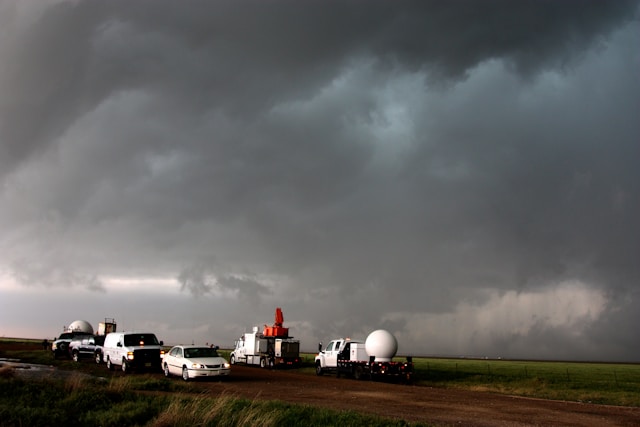Gardening, an age-old love affair between humans and the Earth, has always danced to the rhythms of the weather. From the nourishing rains of spring to the chilling frosts of winter, our gardens bear the brunt and beauty of nature’s moods. In an era where our global climate is in flux, understanding the intricacies of weather becomes paramount for every gardener.
Understanding Microclimates
A garden isn’t just a plot of land—it’s a mosaic of tiny climates. These microclimates can vary from one corner of your yard to another, offering warmer, cooler, wetter, or drier conditions. Recognizing these spots allows gardeners to place plants where they’ll most likely thrive.
The Science of Weather Forecasting
From ancient civilizations observing cloud patterns to today’s sophisticated satellite systems, predicting the weather has come a long way. Gardeners now have access to myriad apps and tools that offer forecasts tailored to their specific needs. By tapping into this data, one can anticipate rain, frost, or heatwaves and plan accordingly.
Weather Extremes and Garden Resilience
As enchanting as gardens are, they’re also vulnerable to nature’s extremes. However, with a touch of foresight, gardeners can armor their spaces. Employing methods like mulching and terracing or investing in rain barrels can significantly improve a garden’s resilience to harsh weather.
The Magic of Rain in Gardens
Rain isn’t just droplets from the sky; for plants, it’s a life-giving elixir. Savvy gardeners can optimize rainfall by setting up rain gardens or using rainwater harvesting systems. These methods not only quench plants but also contribute to sustainable water management.
The Effects of Frost and Snow
Winter’s chill might seem like a garden’s nightmare, but with understanding and preparation, it can be managed. Familiarity with local frost dates, coupled with protective measures like frost cloths or cold frames, can safeguard even the most delicate plants from winter’s bite.
Wind Patterns and Plant Placement
Gentle breezes might whisper secrets to the leaves, but stronger winds can wreak havoc. Recognizing the wind patterns in your area and designing a garden layout to minimize damage is crucial. Strategic placements, like windbreaks or hedges, can serve as sturdy shields against blustery days.
Harnessing the Sun: Understanding Sun and Shade Needs
The sun, in its blazing glory, is the cornerstone of photosynthesis. Each plant has a unique relationship with sunlight, which is often indicated on plant tags. By gauging weather patterns and sunlight, gardeners can ensure that every plant gets its desired amount of golden rays.
Indoor Hydroponic Gardening: Weatherproofing Your Green Thumb
Weather unpredictability remains a significant challenge for gardeners. From unexpected frosts to torrential rains, traditional outdoor gardens are at the mercy of Mother Nature. But what if there was a way to mitigate these external risks while optimizing growth and yield? Enter hydroponic gardening—specifically, indoor hydroponic systems.
What is Hydroponic Gardening?
In hydroponics plants are nourished using nutrient-rich water solutions. When combined with controlled indoor environments, hydroponics offers an innovative way to sidestep adverse weather conditions.
Advantages of Indoor Hydroponic Gardening
Weather Independence: By transitioning indoors, you shield your garden from erratic weather patterns, ensuring consistent growth conditions year-round.
Space-Efficient: Hydroponic systems can be stacked vertically, making them ideal for urban dwellers with limited space.
Water Conservation: Hydroponic systems typically use less water than traditional soil-based gardens since the water is recirculated.
Faster Growth: With optimal nutrient delivery and no soil-borne pests or diseases, plants often grow faster and yield more.
No Soil, No Mess: Say goodbye to the dirt and hello to clean, organized gardening.
Setting Up Your Indoor Hydroponic Garden
Choose a System: From deep water culture to nutrient film technique, there’s a variety of hydroponic systems to suit different needs and space constraints.
Lighting: Sunlight may be inconsistent indoors, making grow lights essential. LED or fluorescent lights are popular choices.
Nutrient Solution: Plants require a balanced mix of nutrients. Purchase a hydroponic nutrient mix to ensure your plants get everything they need.
Monitoring: Regularly check the pH and nutrient levels in your system. There are digital meters available to simplify this task.
Popular Plants for Hydroponic Gardening
Leafy Greens: Lettuce, spinach, and kale thrive in hydroponic systems.
Herbs: Basil, mint, cilantro, and oregano are excellent candidates.
Fruiting Plants: With proper support and lighting, tomatoes, cucumbers, and even strawberries can flourish.
Flowers: Grow ornamental plants like marigolds or even orchids hydroponically for a pop of color.
Overcoming Potential Challenges
Pest Management: Even indoors, pests can be a concern. Implement integrated pest management and opt for organic solutions.
System Maintenance: Regularly clean and maintain your system to prevent issues like algae growth or pump failure.
Education: The world of hydroponics has its learning curve. Invest time in understanding your system and plants’ needs.
Adapting to Climate Change
It’s undeniable—our world’s weather is changing. As gardeners, adapting to these shifts is essential. Opting for plants that tolerate a range of temperatures, or incorporating sustainable practices, can make our gardens not just beautiful but also resilient against the backdrop of climate change.
In Conclusion, while the weather might be unpredictable, armed with knowledge and a touch of adaptability, gardeners can rise to any challenge it presents. By taking cues from nature and staying informed, we ensure that our gardens don’t just survive, but truly thrive.


